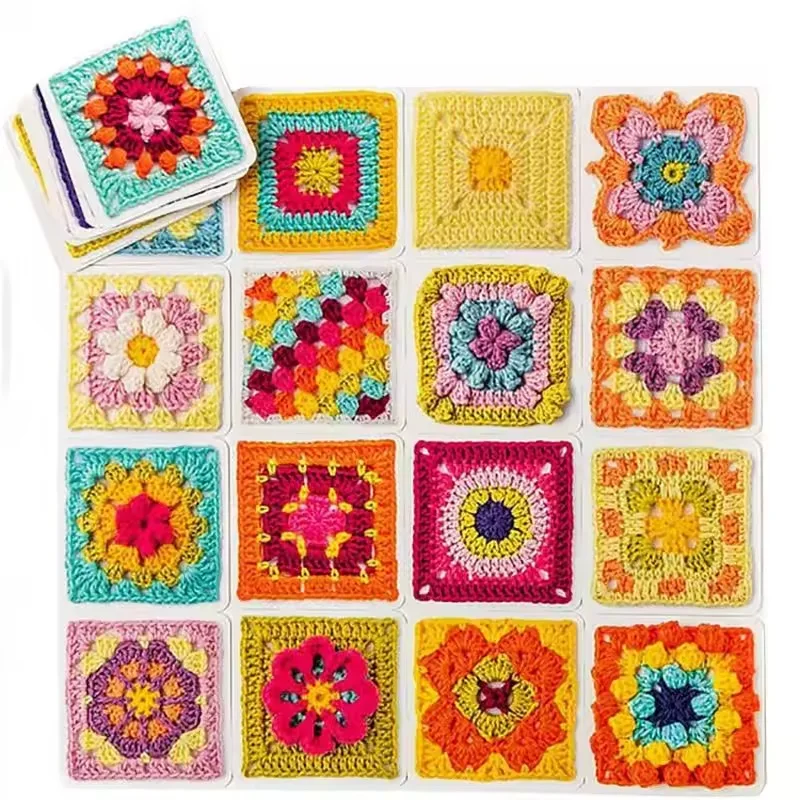How I Learned to Read Crochet Patterns
Once I got comfortable holding my hook and making the basic stitches, I was eager to follow patterns and create more complex and interesting projects. I remember the first time I looked at a real crochet pattern – it honestly looked like a jumble of confusing letters and symbols! But don't worry, I figured out how to break it down step by step, and I want to share how I learned.
Step 1: Understanding Crochet Abbreviations
The first hurdle was realizing that patterns use abbreviations to keep the instructions concise. It saves a lot of space! Here are some of the most common basic ones I learned right away:
- ch
- = chain
- sc
- = single crochet
- hdc
- = half double crochet
- dc
- = double crochet
- sl st
- = slip stitch
- st(s)
- = stitch(es)
- yo
- = yarn over
- rep
- = repeat
Most patterns will include a key or legend listing all the abbreviations used, which is super helpful.
✅ Tip: If I ever got stuck on an abbreviation that wasn't in the pattern's key, I'd just search online for a "crochet abbreviation chart." There are tons available!
Step 2: Decoding Pattern Instructions
Once I started recognizing the abbreviations, the next step was putting them together to understand a line of instruction. A simple instruction might look something like this:
Ch 12.
Row 1: sc in 2nd ch from hook, sc in each ch across, turn. (11 sc)
Here’s how I learned to translate that:
- "Ch 12" = Make 12 chain stitches for the foundation.
- "Row 1:" = This tells me I'm starting the first row.
- "sc in 2nd ch from hook" = Make a single crochet stitch into the second chain stitch counting back from the hook (not the one the loop is currently on).
- "sc in each ch across" = Make one single crochet stitch in every remaining chain stitch along the foundation chain.
- "turn." = Turn my work around so I'm ready to start the next row.
- "(11 sc)" = This is the stitch count! It tells me I should have 11 single crochet stitches completed in that row. This was a lifesaver for checking my work.
✅ Tip: I found it incredibly helpful to read through the *entire* pattern, or at least a few rows ahead, before actually starting to crochet. This gave me a better sense of the project's flow and alerted me to any new stitches or techniques coming up.
Step 3: Understanding Repeats (Asterisks *, Brackets [], Parentheses ())
To avoid writing the same sequence over and over, patterns use symbols like asterisks (*), brackets ([]), or parentheses (()) to indicate sections that need to be repeated. This confused me a bit at first!
Here are examples of how I learned to read repeats:
Row 2: ch 1, *sc in next st, dc in next st; rep from * across, turn.
This means I should repeat the sequence between the asterisks (single crochet in one stitch, double crochet in the next stitch) over and over again until I reach the end of the row.Row 3: ch 1, sc in first 2 sts, [ch 1, sk next st, sc in next st] 5 times, sc in last 2 sts, turn.
Here, I do the sequence inside the brackets (chain 1, skip a stitch, single crochet in the next stitch) exactly 5 times in a row, after the initial 2 single crochets and before the final 2 single crochets.Rnd 4: ch 3, (2 dc in next st, dc in next 2 sts) rep around, join with sl st.
Working in a round (Rnd), I repeat the sequence in the parentheses (two double crochets in the same stitch, then one double crochet in each of the next two stitches) all the way around until I get back to the beginning.
Understanding how these repeats work was a major 'aha!' moment for tackling more complex patterns.
Step 4: Reading Crochet Diagrams (Symbol Charts)
Some patterns, especially popular internationally or for visual learners, use charts or diagrams made of symbols instead of, or in addition to, written instructions. Each symbol represents a specific stitch (like an 'X' or '+' for single crochet, a 'T' with one crossbar for double crochet, etc.).
Learning charts felt like learning another new language! What helped me was:
- Finding patterns that included *both* written instructions and a chart.
- Comparing the chart row-by-row (or round-by-round) with the written text to see exactly how the symbols matched the words.
- Looking at the chart's key, which defines what each symbol means.
Once I got used to them, I found charts could be a really quick way to understand stitch placement, especially for things like lace or motifs.
✅ Tip: I printed out a cheat sheet of common crochet chart symbols and kept it with my hooks until I started to memorize the main ones. Very helpful!
Final Thoughts
Learning how to hold a crochet hook comfortably (like we talked about before!) and then learning how to read patterns were the two biggest steps that really unlocked the world of crochet for me. It definitely took practice and patience, and I spent a fair bit of time looking things up online when I was unsure.
If you’re just starting out with reading patterns, take it slow. Work through one line at a time. Don’t be afraid to use abbreviation lists and symbol charts constantly. Experiment, practice on small swatches, and celebrate your progress! Soon, reading those patterns will feel much more natural, opening up endless possibilities for what you can create.






 25%
25%


: